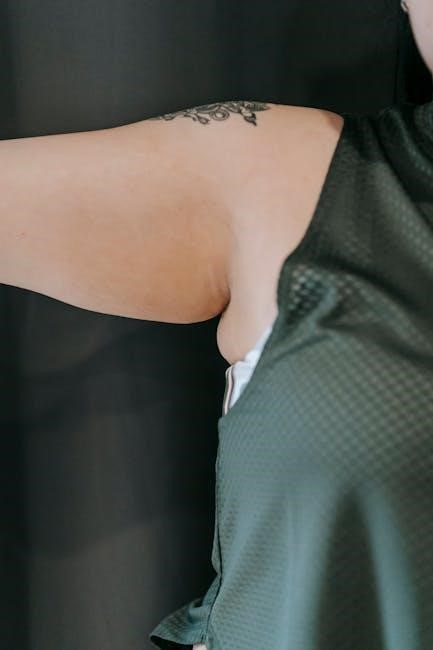Visual Anatomy & Physiology Lab Manual⁚ A Comprehensive Overview
This lab manual integrates a visual approach with a modular structure to optimize learning. It leverages the strengths of the Martini/Ober/Nath/Bartholomew/Petti textbook, enhancing practical, active learning through hands-on activities and MasteringA&P assignments.
Traditional anatomy and physiology labs often rely heavily on rote memorization and textual descriptions. However, the visual approach employed in this lab manual significantly enhances comprehension and retention; By incorporating high-quality anatomical illustrations, diagrams, and micrographs directly from the renowned Visual Anatomy & Physiology textbook by Martini et al., the manual bridges the gap between abstract concepts and tangible reality. This visual richness allows students to actively engage with the material, fostering a deeper understanding of complex anatomical structures and physiological processes. The strategic use of visuals transforms learning from passive absorption to active construction of knowledge. The integration of visual aids within a modular framework allows students to break down complex concepts into smaller, manageable units, facilitating sequential learning and improved comprehension. The visual approach is further strengthened by the integration of interactive exercises and MasteringA&P assignments, encouraging self-paced learning, and providing ample opportunities for practice and reinforcement of concepts.
Key Features and Benefits of Visual Learning in A&P
Visual learning significantly enhances understanding and retention in anatomy and physiology. This manual capitalizes on this by utilizing high-quality images and diagrams from the acclaimed Visual Anatomy & Physiology textbook. The visual approach facilitates a more intuitive grasp of complex structures and processes, moving beyond simple memorization to a deeper conceptual understanding. Students can readily visualize relationships between different body systems and the intricate details of organs and tissues. This leads to improved problem-solving skills, as students can better interpret anatomical images and apply their knowledge to real-world scenarios. The clear, concise visuals make complex information more accessible to diverse learning styles, catering to both visual and kinesthetic learners. The incorporation of videos and interactive exercises further enhances engagement and knowledge retention, resulting in a more effective and enjoyable learning experience. This multifaceted approach ensures that students develop a strong foundation in anatomy and physiology, preparing them for future studies and professional endeavors.
The Role of Visual Aids in Mastering A&P Concepts
Visual aids are paramount in mastering the complexities of anatomy and physiology. This lab manual employs a strategic integration of diverse visual resources, including detailed anatomical illustrations, microscopic images, and clinical photographs. These visuals bridge the gap between abstract concepts and concrete reality, fostering a deeper understanding of the human body’s structure and function. High-resolution images allow students to examine intricate details of organs, tissues, and cells, significantly improving their ability to identify and understand anatomical features. Furthermore, the integration of interactive components, such as videos and animations, enhances engagement and promotes a more dynamic learning experience. These visual tools facilitate a more intuitive understanding of physiological processes, allowing students to visualize the dynamic interplay of various systems. By combining detailed static images with interactive elements, the manual caters to diverse learning styles and promotes a more holistic and effective learning experience, solidifying knowledge retention and application.
Utilizing the Lab Manual⁚ A Step-by-Step Guide
This section provides a structured approach to using the manual effectively. It details how to maximize learning through visual resources, hands-on activities, and MasteringA&P integration for optimal results.
Effective Use of Visual Resources within the Manual
The Visual Anatomy & Physiology Lab Manual is designed to fully utilize the power of visual learning. High-quality images, directly adapted from the renowned Martini Visual Anatomy & Physiology textbook, are strategically integrated throughout the manual. These visuals aren’t merely supplemental; they are core components of the learning process. Each illustration is meticulously crafted to highlight key anatomical structures and physiological processes. Detailed labels and clear annotations ensure that students can easily identify and understand the complex relationships within the human body. The integration of these visuals encourages active learning, prompting students to engage with the material in a more dynamic way than simply reading text. This visual approach enhances comprehension and retention of anatomical and physiological concepts. Furthermore, the inclusion of videos and animations in MasteringA&P provides additional opportunities to visualize complex processes in motion. This multi-sensory approach caters to diverse learning styles, ultimately leading to a more comprehensive and enjoyable learning experience.
Hands-on Activities and Practical Exercises
The Visual Anatomy & Physiology Lab Manual prioritizes active learning through a rich variety of hands-on activities and practical exercises. These exercises are designed to reinforce concepts introduced in lectures and the textbook, providing students with opportunities to apply their knowledge in a tangible way. The manual includes detailed instructions for various lab procedures, from microscopy and the careful handling of specimens to dissection and comparative anatomy studies. Emphasis is placed on developing essential lab skills, such as precise observation, accurate data recording, and critical analysis of results. Students aren’t merely passive observers; they actively participate in the learning process, enhancing their understanding of anatomical structures and physiological functions. The inclusion of pre-lab questions encourages preparation and critical thinking before engaging in the practical exercises. Post-lab assignments further solidify their understanding and promote the development of problem-solving abilities. This active learning methodology helps students to translate theoretical knowledge into practical skills, improving retention and enhancing overall comprehension.
Integrating MasteringA&P for Enhanced Learning
The Visual Anatomy & Physiology Lab Manual seamlessly integrates with MasteringA&P, a powerful online learning platform designed to complement and extend the learning experience. MasteringA&P provides a wealth of interactive resources, including self-assessment quizzes, interactive exercises, and animations, all meticulously aligned with the content of the lab manual. These digital resources offer students opportunities for self-directed learning and practice, reinforcing key concepts and allowing them to assess their understanding at their own pace. The integration of MasteringA&P enhances the learning process by providing immediate feedback, identifying areas where further study is needed, and encouraging a deeper engagement with the subject matter. This combined approach—the hands-on activities of the lab manual and the interactive exercises of MasteringA&P—creates a comprehensive and effective learning environment, maximizing student success in understanding and applying anatomical and physiological principles.
Specific Examples of Visual Anatomy & Physiology Lab Exercises
The manual details exercises covering microscopy, cellular structures, dissection, organ system exploration, and comparative anatomy studies, all enhanced by visual aids.
Microscopy and Cellular Structures
This section of the Visual Anatomy & Physiology Lab Manual introduces students to the fundamental techniques of microscopy, crucial for observing the intricate details of cellular structures. Detailed instructions guide students through the proper handling and operation of compound light microscopes, emphasizing the importance of precise focusing and adjustment of light intensity using the iris diaphragm and condenser lens. Clear diagrams and step-by-step procedures ensure that students can effectively visualize and identify various cellular components, including the nucleus, cytoplasm, and organelles. Pre-lab questions assess prior knowledge and prepare students for the practical aspects of the exercise. Post-lab assignments challenge students to analyze their observations, further solidifying their understanding of cell biology.
Dissection and Organ System Exploration
The Visual Anatomy & Physiology Lab Manual incorporates detailed, illustrated guides for hands-on dissection exercises. These exercises focus on exploring the anatomical relationships within various organ systems. Students will learn proper dissection techniques, emphasizing careful observation and precise identification of structures. The manual provides clear visual references, including high-quality images and diagrams, to aid in the identification of key anatomical features. Safety precautions and ethical considerations regarding the use of specimens are prominently featured. Pre- and post-lab questions encourage critical thinking and reinforce learning outcomes. The exercises are designed to build upon each other, creating a comprehensive understanding of the interconnectedness of different organ systems.
Comparative Anatomy Studies
Comparative anatomy studies within the Visual Anatomy & Physiology Lab Manual provide a unique perspective on anatomical structures and their evolutionary relationships. Utilizing various specimens, including those from different species, students will directly compare and contrast homologous and analogous structures. This approach facilitates a deeper understanding of evolutionary adaptations and the underlying principles of form and function. The manual includes detailed descriptions and high-quality images of diverse specimens, allowing for detailed comparative analysis. Guided questions and activities promote critical thinking about evolutionary processes and the functional significance of anatomical variations observed across species. This comparative approach enhances understanding of human anatomy and physiology within a broader biological context.
Assessment and Evaluation in the Visual A&P Lab
Assessment in the Visual Anatomy & Physiology Lab Manual utilizes a multifaceted approach to gauge student comprehension and practical skills. This includes a variety of methods such as pre-lab quizzes to assess prior knowledge and readiness, in-lab practical exercises to evaluate hands-on competency, and post-lab assessments to confirm understanding of key concepts. The manual may also integrate MasteringA&P, an online platform providing additional practice and assessment opportunities, aligning with the visual learning approach. Feedback mechanisms, whether through instructor review of practical work or automated grading of online components, are designed to be both timely and constructive. The overall evaluation strategy emphasizes a holistic understanding of anatomy and physiology, integrating theoretical knowledge with practical application, thereby ensuring a comprehensive and effective assessment of student learning.



Leave a Reply
You must be logged in to post a comment.